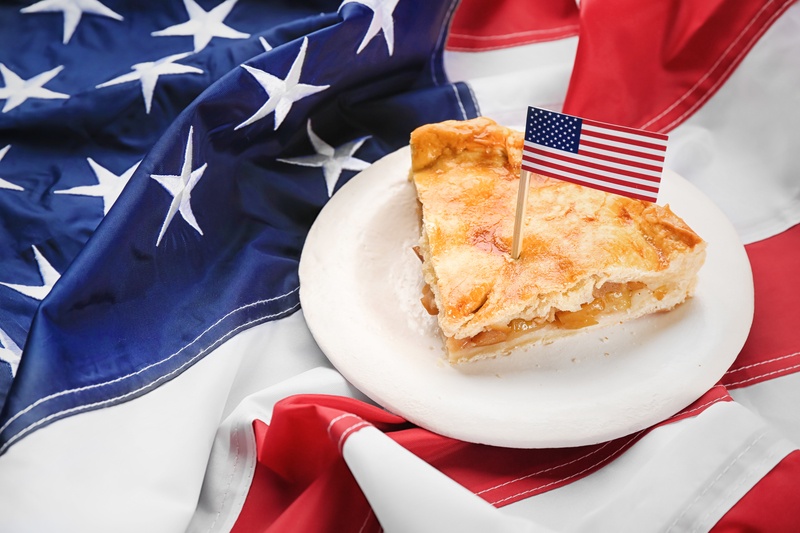Independence Day and Apple Pie
As the country prepares to celebrate Independence Day this Fourth of July, we’ve found ourselves thinking a lot about all things red, white, and blue—which led us to apple pie. After all, what’s more American than apple pie? As it turns out, a lot of things! However, just because apple pie wasn’t invented in the U.S., that doesn’t mean it wasn’t perfected here.

Early Apple Pie
It’s hard to believe, but the first apple pie recipe printed was in England way back in 1381, roughly 400 years before the United States declared its independence. Even more amazing is that the author of the first apple pie recipe was none other than Geoffrey Chaucer—yes, the same Chaucer that wrote The Canterbury Tales, which we all had to read in high school English class.
Apple Pie Goes Dutch
Although the English are credited with the first apple pie recipe, the Dutch are responsible for creating the recipe that most resembles the apple pie we eat today with the earliest published recipe dating back to 1514—more than 250 years before the founding fathers signed the Declaration of Independence. Noticeable differences found in the Dutch recipe are the inclusion of spices like cinnamon and nutmeg, and the addition of sugar. Another contribution of the Dutch is the lattice pattern commonly used to adorn the top of the pie.
Home of the Apple Free
Embracing apple pie as one of the U.S.’s signature desserts is even more surprising when you consider that the only apples that are native to North America are crab apples, whose small and sour fruit isn’t suited for desserts. Luckily for today’s apple pie aficionados, the history of apples in North America is just about as long as North America’s history with Europeans. Apple seeds were brought to what is now the USA both by the early colonists of Jamestown and the Pilgrims on the Mayflower.
Sigh-der
Once the apple seeds brought by the early settlers were grown to maturity in North America, they were primarily used for making cider, not pie. It wasn’t until the cookbook American Cookery was published in 1796—20 years after the signing of the Declaration of Independence—that an apple pie recipe made an appearance in North America.
US á la Mode
The evolution of apple pie took a huge leap in the mid-1890s—roughly 100 years into our nation’s history—at the Cambridge Hotel, in Cambridge, New York, when Charles Watson Townsend ordered a scoop of ice cream to accompany his piece of pie. Asked by another diner what the dessert was called, Townsend admitted the dish did not have a name. The other diner quickly dubbed the dish “pie á la mode,” which translates to in style or in fashion. Townsend liked the name so much, he asked for the dish by name every time he visited.
How ‘Bout Them Apples
Today, apple pie is still one of the U.S.’s favorite desserts and is a staple on America’s tables from coast to coast—and we're happy to play its role in getting apples out of the orchard and into á la mode. Much like apple pie itself, our Galaxy Garden Pro has been perfected over time and is now a favorite in orchards from New York to Washington state. The low-profile Garden Pro’s radial construction helps reduce soil compaction and damage to the sensitive upper root zone in orchards, keeping trees healthy, happy, and fruitful. And, with its high solid-to-void ratio, the Garden Pro is perfect for transporting apples from the orchard to your home pie. To learn more about the Galaxy Garden Pro, contact your local dealer today.
(Just because apple pie originated elsewhere, don’t let that stop you from indulging in one of this nation’s favorite dishes. And, don’t be fooled by the French wording, á la mode is as American as, well, apple pie.)


